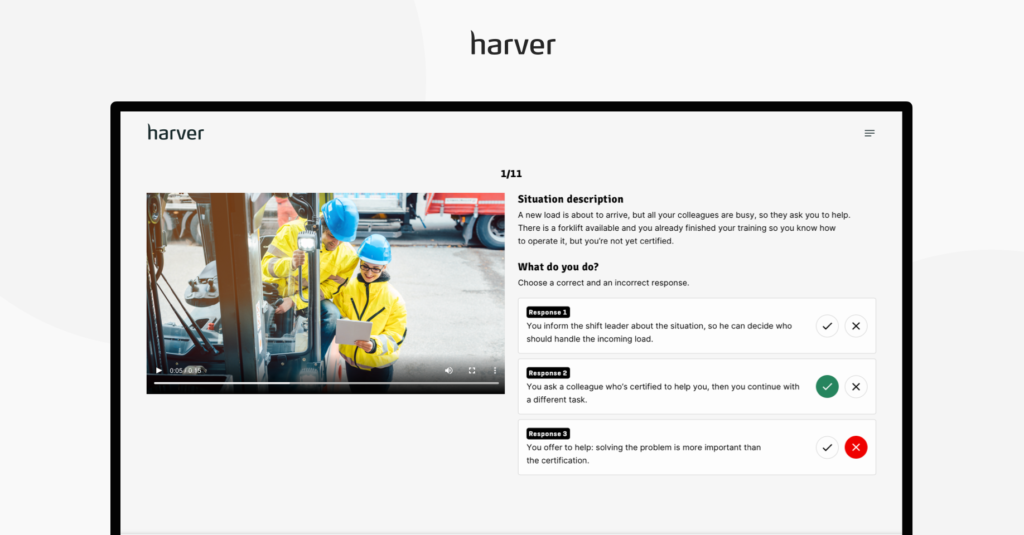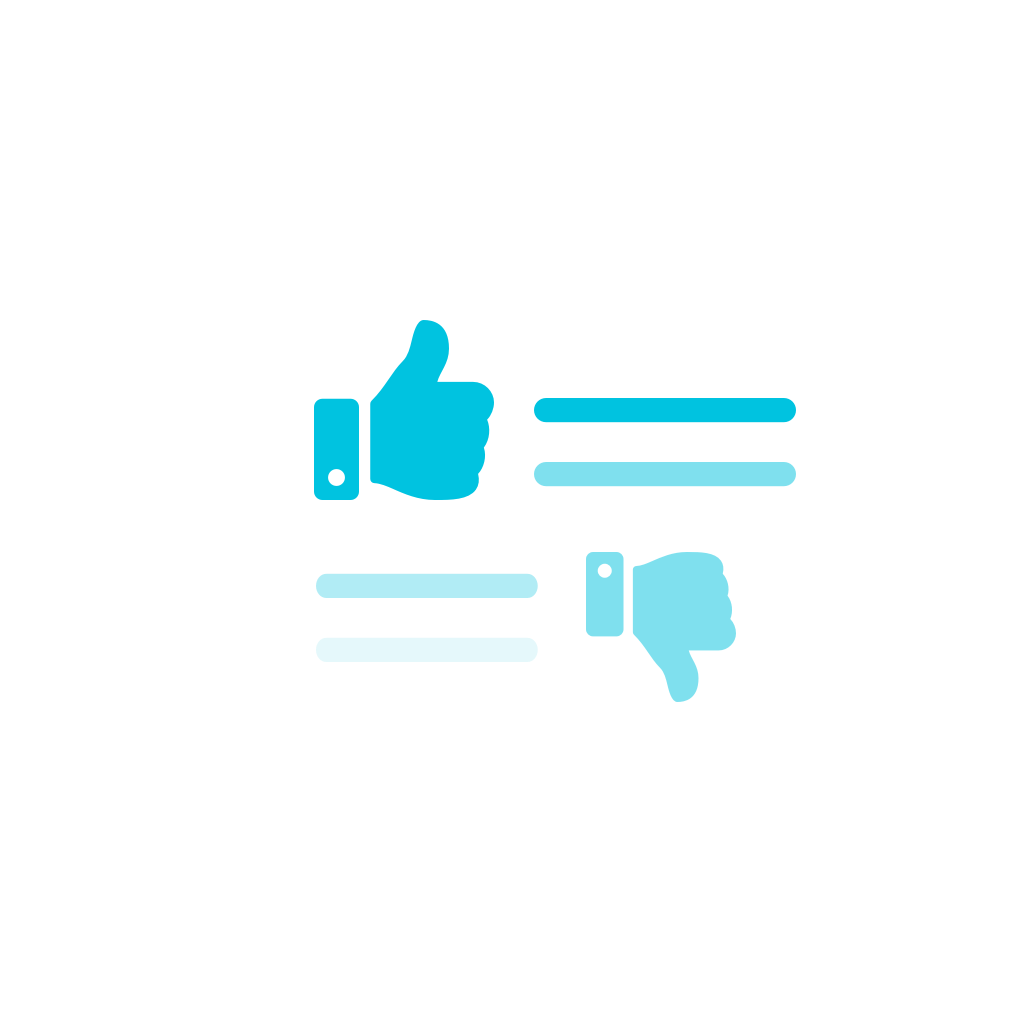The manufacturing industry is no stranger to high employee turnover, and right now, it’s in the midst of a hiring crisis that’s leaving employers scrambling. While the industry did manage to recoup 63% of jobs lost during the pandemic, the remaining 570,000 jobs have yet to be added back.
Now, it’s expected that nearly 3.5 million manufacturing jobs will open up by 2025, two million of which are expected to go unfilled because of the skills gap. If this plays out as predicted, those vacancies could end up costing the U.S. economy $1 trillion in 2030 alone.
With numbers like these, it’s no wonder 77% of manufacturers say they expect to have ongoing difficulties attracting and retaining workers, both this year and beyond. Manufacturers need to attract and retain new talent to bridge the gap.
So let’s look at what employers can do to improve retention and reduce employee turnover in manufacturing roles.
What’s in?
Common causes of employee attrition in manufacturing
According to the Association for Manufacturing Excellence, the average manufacturing company has an absenteeism and employee turnover rate of about 37%.
With the average U.S. turnover lingering around 2.7%, it’s clear the manufacturing industry is particularly prone to losing workers – but why?
Facing these challenges, more and more manufacturing companies are looking for ways to reduce employee turnover, but doing so effectively starts with understanding the reasons behind attrition. What’s causing employees to jump ship?
Some of the main causes of high employee attrition in manufacturing roles include:
Poor onboarding and training for new hires
Employees that aren’t properly trained during onboarding are ill-equipped and not set up for success in their roles. Additionally, the absence of added training and ongoing education might be enough to send your new hires running for the hills—or at least to the nearest open position with a competitor.
Lack of job security and career growth
All too often, manufacturing roles offer employees limited or no opportunities to advance in their careers. This can lead to increased attrition due to employees potentially feeling uncertain about their job security and future with your organization.
Mismanaged candidate expectations
Misaligned expectations are one of the leading causes of attrition. When applicants don’t have a clear understanding from day one of what working in a manufacturing role entails, they’re more likely to leave for another type of job.
Also, more and more manufacturing roles are becoming increasingly technical, which leads to skills gaps and creates additional challenges for recruiters. On top of this, manufacturing jobs are not seen as particularly attractive by the younger generations; in fact, the modern workforce has a negative perception of working in this sector.

45%
of prospective younger employees have a negative perception towards the manufacturing industry.
Source: Deloitte
Skills gap
Finally, the digital transformation of the industry is accentuating the skills gap, making it even more difficult for manufacturing recruiters to fill the open positions. According to a survey by Deloitte, 75% of industrial organizations identified reskilling their workforce as important or very important for their success over the next year, but only 10% said they were ready to address this need.
How can manufacturers overcome these challenges and develop a workforce strategy that enables them to attract new talent for their open roles, while retaining their middle-skill employees for longer?
Like what you see?
Don’t miss out. Subscribe to our quarterly digest to get the latest TA and TM resources delivered right to your inbox.
How to reduce employee turnover in manufacturing roles
The good news is, there are several different ways you can combat the ever-present challenge of high turnover in manufacturing. The following tactics will help you attract and ultimately retain top manufacturing talent for your company:
1. Optimize candidate sourcing
One of the best ways to tackle high employee turnover in manufacturing is to optimize your sourcing strategy. Rather than simply posting job openings on the most popular sites like Indeed.com, see if there are job boards that specialize in such roles, such as:
You can also get extra creative and consider holding hiring events, attending high school and job fairs, and more. Make it a point to use recruitment data and analytics to determine the best sourcing channels. Which candidate sourcing channels are most effective? Where are your top hires coming from?
Many recruiters also benefit from programmatic job advertising, or the purchasing, publishing, and optimizing of job ads by electronic software rather than actual people. Using programmatic job advertising software, you can automate purchasing space to advertise job openings to your target demographic where they’re most active online.
2. Manage candidate expectations
During the application and hiring process, it’s important that expectations are properly set so candidates know exactly what the role entails and what is expected of them on the job. That means ensuring your applicants understand the depth of knowledge and skills required, boundaries of their specific responsibilities, work schedule requirements, and the quality of work you’re looking for.
Realistic job previews (RJP) and job trial days are great ways to manage candidate expectations during the recruitment process. As its name implies, a realistic job preview offers a truly realistic look into what a job is actually like, spotlighting both the positives and negatives so candidates can get a real feel for the role.
By giving your manufacturing candidates a realistic job preview, you can ensure you’re putting the right people in the right roles, all while reducing turnover rates in the process.
In practice, RJPs can be created using situational judgement tests (SJTs), a type of pre-employment assessment during which candidates are shown a couple of realistic scenarios involving both routine tasks and critical incidents, and are asked to choose the best and the worst way to respond to those scenarios.

Each question is designed to assess specific skills and characteristics which are known to be relevant for the role, and to be possessed by the top performing employees in an organization. For example, if your top performers have great customer orientation skills, score high on cognitive ability and openness, and have good communication skills, then these characteristics will be assessed through SJTs.
Of course, the exact skills to assess will depend on the company profile and culture and on the nature of the role, as each job comes with its specific requirements. If you’d like to learn more about the SJTs developed by Harver, you can book a demo below.
Ready to transform your hiring process?
3. Showcase the work environment
Showcasing the environment where your manufacturing employees work is another highly effective way of making sure you’re hiring the right people for your organization from the beginning of the recruitment process. Undesirable work conditions are one of the quickest ways to turn your candidates off to the role in question.
Make sure to share important details regarding the manufacturing work environment: Is the factory showing signs of wear and tear due to negligence, or is it clean and well organized? What’s the layout like? Make sure your factory conditions are up to par, and communicate that to your candidates to reduce the likelihood of turnover among hires.
You can do this by incorporating a company video in your application process or by using a cultural fit assessment when selecting candidates.
4. Assess candidates for skills
Making the wrong hire can be costly, frustrating, and detrimental to your company’s operations. Before you move applicants through the recruitment funnel to the interview stage, consider using pre-hire assessments, or tests and tools used to evaluate a wide variety of competencies, customized to your hiring needs.
For example, you can assess anything and everything from cognitive abilities, personality traits, and learning agility, to multitasking abilities, situational judgment, and cultural fit.
Pre-hire (or pre-employment) assessments are also available in numerous shapes and sizes, including paper, digital, and real-life tests—meaning you can choose the assessment type and format that best meets your organization’s needs and helps guide your hiring decisions for the better.
We’ve already touched upon this topic above, but you can check the entire library of pre-employment assessments available in the Harver platform below.
5. Standardize the interview process
To achieve consistent results, you need a uniform interview process that makes it easy to compare and ultimately select the optimal candidates.
Standardizing the interview stage of your recruitment efforts with a structured process and predetermined questions to ask candidates will help you gain a better understanding of how well different people might fit the specific role you’re hiring for, as well as your organization as a whole.
We’ve detailed the topic in the article below.
Additionally, by standardizing your interviews for manufacturing roles, you can also eliminate unconscious bias to ensure a fair hiring practice for each and every individual. Besides, your manufacturing employees will surely appreciate working for a diverse, inclusive organization.
The state of diversity recruiting in 2020
6. Provide career growth opportunities
Since a lack of job security and career growth leads to higher employee turnover in manufacturing, offering various advancement opportunities can help retain talent and provide workers with a stronger sense of stability on the job. One way to make this clear early on is to share a clear career path for your new hires.
In other words, show employees exactly where they can go, and what steps they need to take in order to get there at your manufacturing company. Then, you can develop your employees according to plan and promote from within when you need to hire for management manufacturing roles.
7. Offer employees scheduling flexibility
Offer your employees total flexibility when it comes to scheduling. Rather than trying to force an unappealing work schedule on your manufacturing employees, ask them early in the hiring process about their availability. By allowing employees to determine their own schedules, you can appeal to more people during the application stage and retain talent for longer than you might with a stricter, more rigid schedule.
8. Invest in onboarding and training
Comprehensive onboarding and training is essential in any industry, and manufacturing is no exception. If you train your new hires for success and arm them with the knowledge and resources they need to excel, they’ll be more likely to stick around.
Putting strong trainers in a position to guide new manufacturing employees and mentor them over time will help you improve productivity while also reducing unnecessary attrition. Dedicate time and resources to training and avoid rushing the process. Your manufacturing employees will thank you for it, and it’ll show in their quality of work.
9. Protect employees from safety risks
A safe work environment is essential for reducing turnover—especially for employees in roles that are more prone to workplace accidents. Manufacturing jobs are strenuous and labor-intensive, often presenting an increased number of risks that simply aren’t prominent in other industries and roles.
From slips and trips to chemical exposure, there are numerous hazards that can put manufacturing employees at risk. That’s why you should take great care to protect your manufacturing employees from safety risks on the job. To determine whether you’re offering a safe, secure work environment, ask yourself the following questions:
- Are you following mandated workplace safety regulations?
- Are your employees trained in the proper safety protocols?
- Are there rules for maintaining and guarding heavy machinery?
- Have you had any complaints from employees regarding safety?
10. Recognize top-performing employees
When your manufacturing employees are going above and beyond for your organization, it only makes sense to recognize them for their hard work and dedication.
Consider creating an employee recognition program to award team members with public acknowledgement, bonuses, or even additional time off for their efforts.
This way, you can celebrate the big wins and recognize employees who are giving it their all. The result? They’ll know they’re valued and appreciated members of your team, and will be more likely to stick around for the long haul.
Next steps
Employee attrition is a pain point in the manufacturing industry—especially right now in the midst of the hiring crisis impacting so many. However, with the right strategy and tactics in place, you can reduce employee turnover in manufacturing roles and retain top talent for as long as possible.
If you’d like to see how Harver can help you optimize your recruitment strategy to recognize top talent, optimize your candidate selection process, and decrease employee turnover rates in the long run, you can book a demo below.
Ready to transform your hiring process?







